'Sporting Estates' as they are known became fashionable in Victorian times and even with the current political climate they remain the favoured retreats of sports men and women from around the world. Last May we were lucky enough to head up to a small private estate in Aberdeenshire for a spot of roebuck stalking, in particular looking for bucks out on the open hill.
Although the roebuck season opens on the 1st of April, the weather tends to be cold and unpredictable. Britain tends to be warmer in May, with plenty of plant growth as the sunshine hours increase. May also sees increased activity amongst the roe as bucks start to establish territories, often chasing away other bucks. Most mature bucks will also be out of velvet and the antlers will have taken on a colour natural to the environment where they have frayed them.
Now for the uninitiated, Roe out on the open hill are a tricky, wiley little adversary with the ability to sit tight and unobserved, whilst watching your every movement. In the open terrain of the moorland you are immediately at a disadvantage, from almost the moment you leave the lodge. You need to rely on the undulations and contours of the land to prepare your stalk, factoring in the direction of the wind and if out early enough in the morning the position of the sun above the horizon. Often you will have to find a favoured spot of your own way out on the hill and just sit patiently 'glassing' for any deer. It allows plenty of time for self reflection and without question allows those of us from the hectic south time to unwind and pit our wits against both quarry and surroundings.
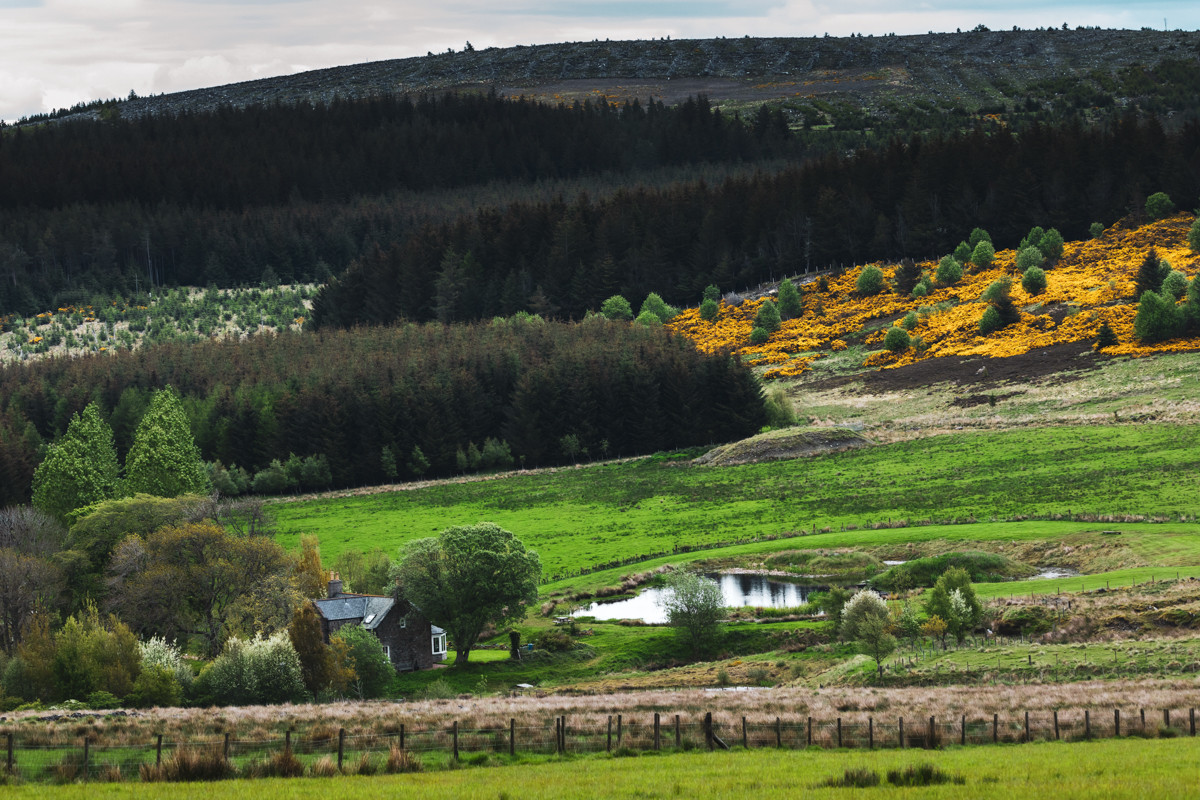 The estate is in rural Aberdeenshire, nestled in a private valley surrounded by large tracts of commercial forestry. Owned by a passionate sportsman it has numerous game species of the feathered, furred and scaled variety. Over the best part of two decades the estates owner has introduced many people to the joys of life in Scotland and the beauty of the countryside found there. Scotland is without doubt one of the finest sporting countries in the world.
The estate is in rural Aberdeenshire, nestled in a private valley surrounded by large tracts of commercial forestry. Owned by a passionate sportsman it has numerous game species of the feathered, furred and scaled variety. Over the best part of two decades the estates owner has introduced many people to the joys of life in Scotland and the beauty of the countryside found there. Scotland is without doubt one of the finest sporting countries in the world.
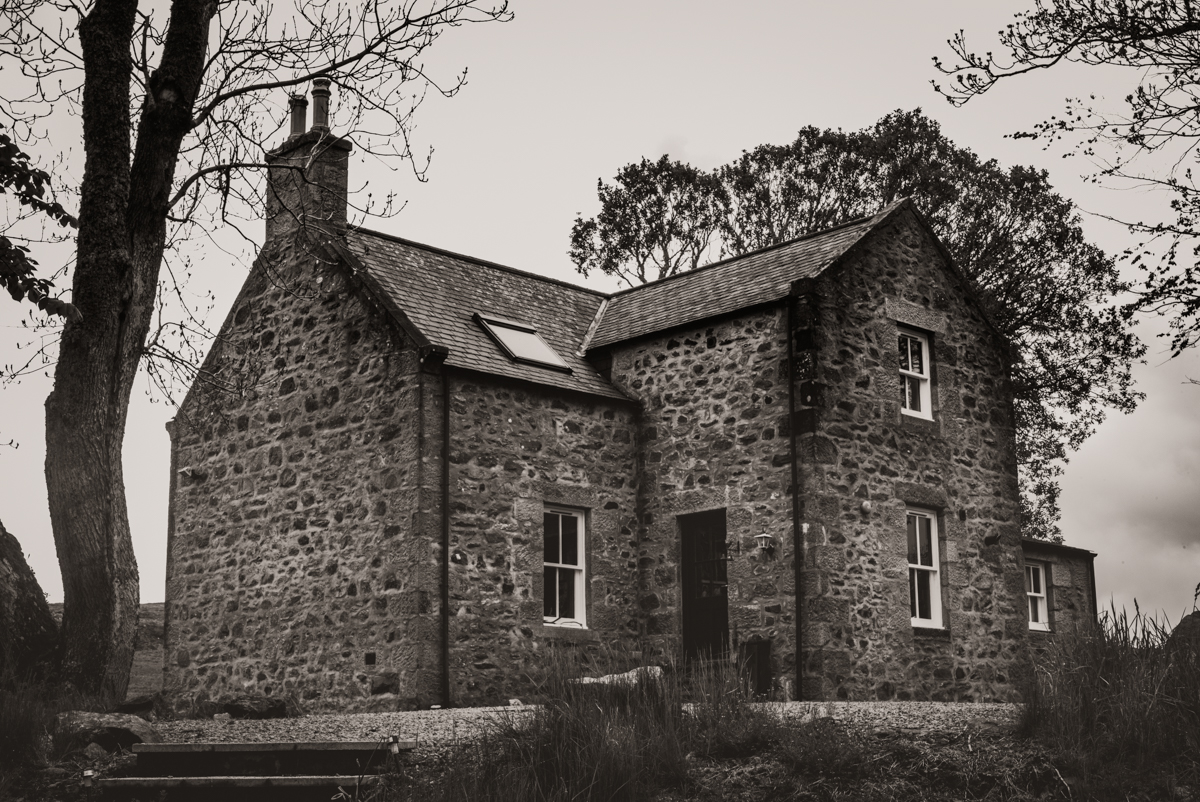 A wonderful stone built lodge. Refurbished several years ago it makes for the perfect retreat, far enough away from civilisation that you can immerse yourself into the natural environment. Thankfully no mobile phone reception, tv or wifi exits here!
A wonderful stone built lodge. Refurbished several years ago it makes for the perfect retreat, far enough away from civilisation that you can immerse yourself into the natural environment. Thankfully no mobile phone reception, tv or wifi exits here!
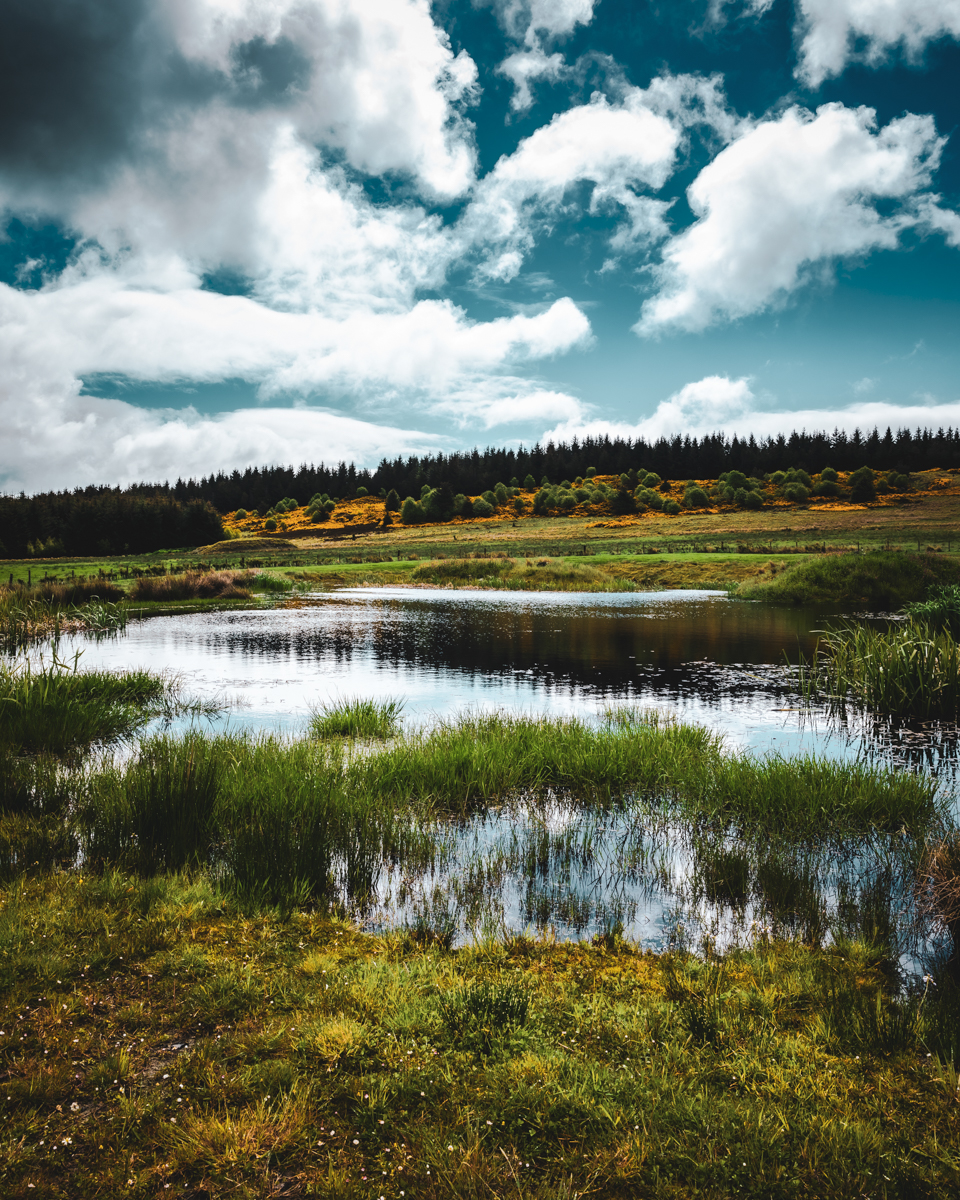 The lochs next to the lodge are well stocked with rainbow trout which make for good sport during the day. The peace as they say can be deafening, with virtually zero noise pollution, the only exception being the odd forestry vehicle.
The lochs next to the lodge are well stocked with rainbow trout which make for good sport during the day. The peace as they say can be deafening, with virtually zero noise pollution, the only exception being the odd forestry vehicle.
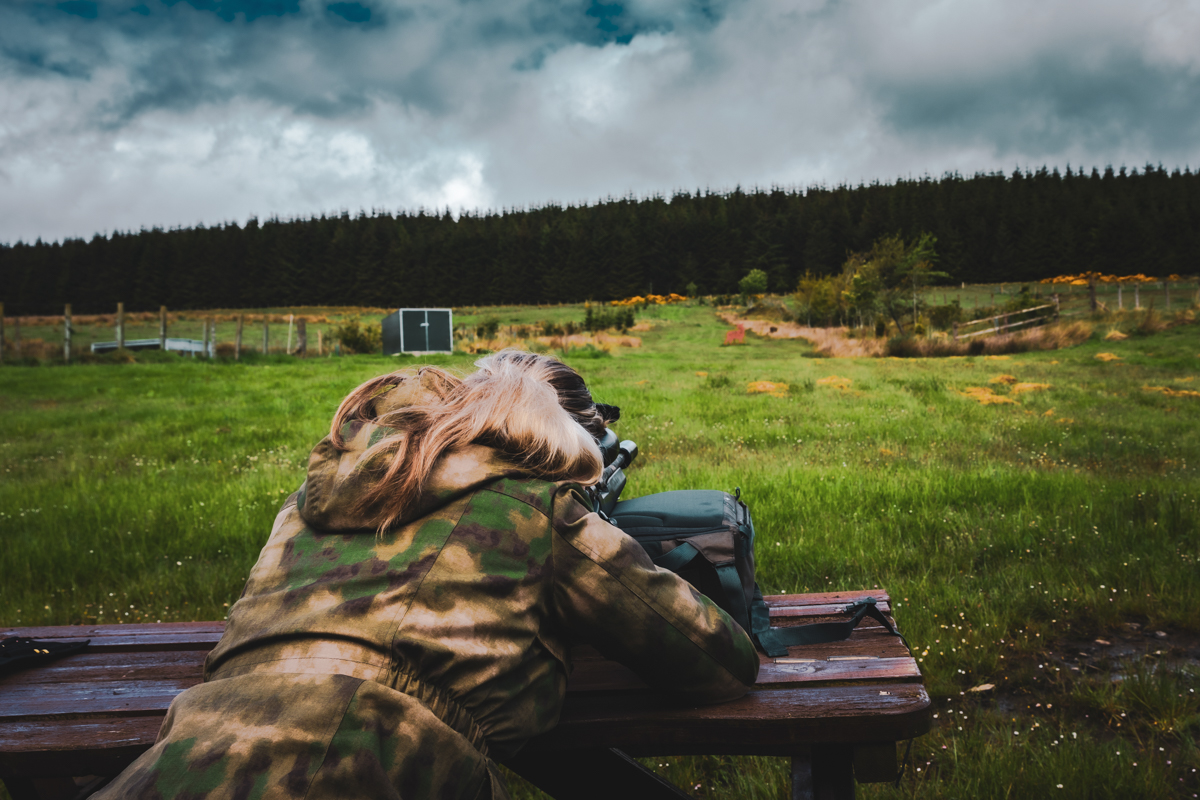 Some shots at the 'iron stag' are always in order to check that the rifle is holding zero and will place a shot accurately when the time comes to stalk live quarry. Traditionally found on Scottish estates, the iron stag is more useful than conventional circle targets as it's 'life size' helps the novice become accustomed to seeing and aiming at deer when on the hill.
Some shots at the 'iron stag' are always in order to check that the rifle is holding zero and will place a shot accurately when the time comes to stalk live quarry. Traditionally found on Scottish estates, the iron stag is more useful than conventional circle targets as it's 'life size' helps the novice become accustomed to seeing and aiming at deer when on the hill.
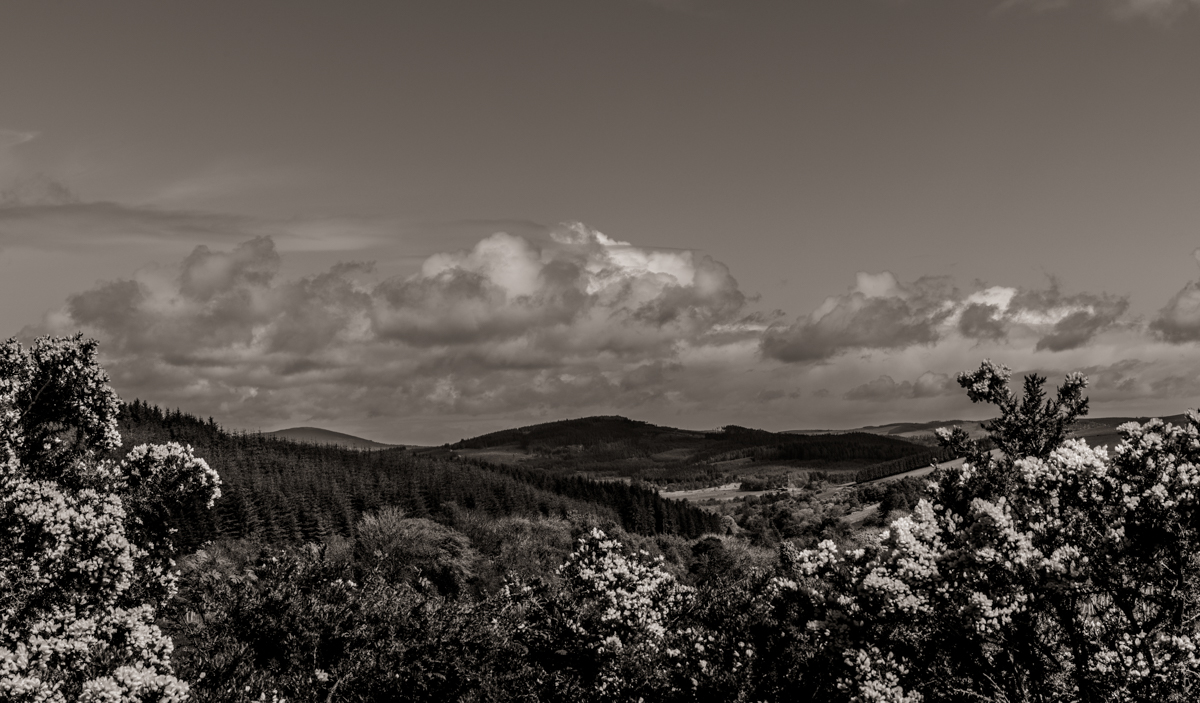 The expansive views and dramatic sky's, really do make Scotland special. The weather can turn into anything at this time of year as we found out on this trip, so be prepared for sunshine to snow, perhaps all in one day!
The expansive views and dramatic sky's, really do make Scotland special. The weather can turn into anything at this time of year as we found out on this trip, so be prepared for sunshine to snow, perhaps all in one day!
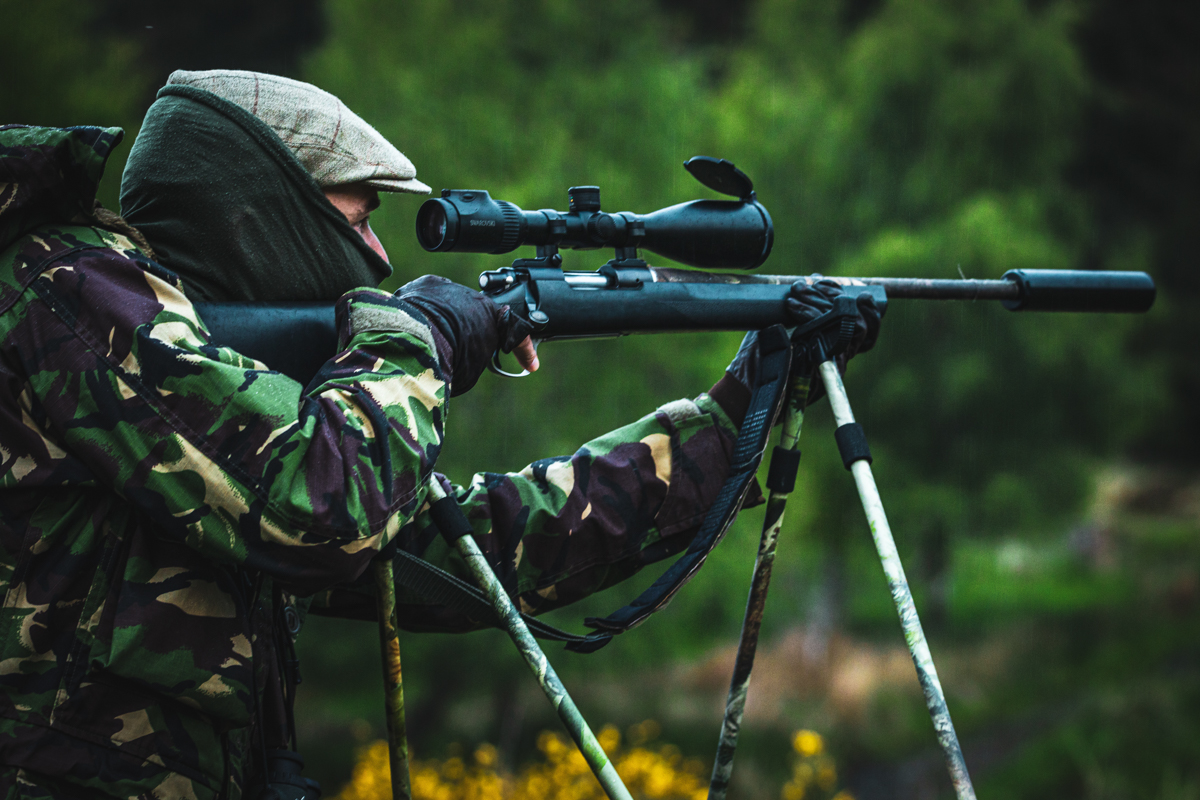 When stalking the woodland fringes of the low ground it is useful to have a set of shooting sticks. The 'Quad' leg system is rock solid and allows for steady aiming. The ultimate aim of any stalker, or rifle, is to shoot accurately and kill any beast swiftly.
When stalking the woodland fringes of the low ground it is useful to have a set of shooting sticks. The 'Quad' leg system is rock solid and allows for steady aiming. The ultimate aim of any stalker, or rifle, is to shoot accurately and kill any beast swiftly.
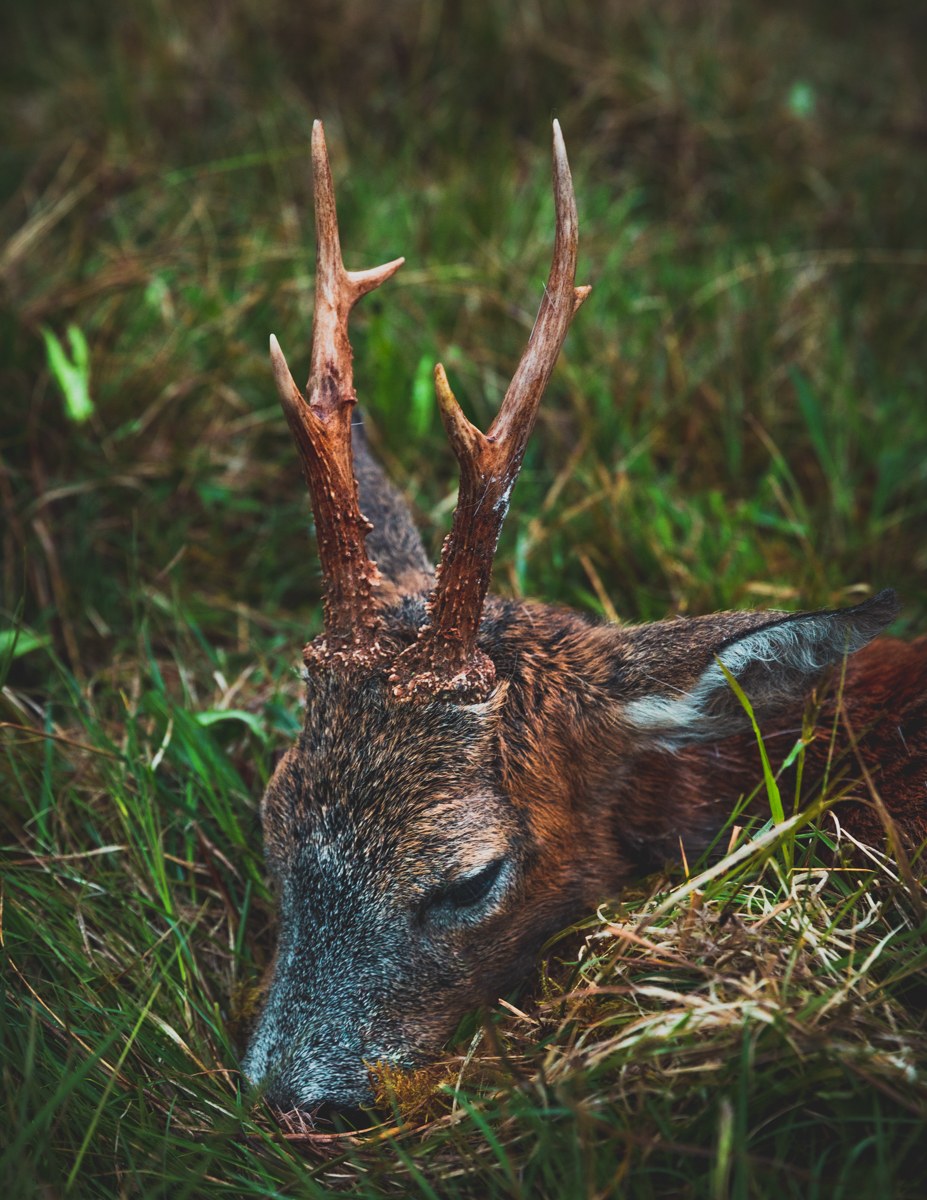 An even 6 point buck. By May the velvet has been frayed from the antlers on a suitable tree or bush, imparting a natural colour to the antlers. This buck was stalked in the low ground of the estate which requires a different set of stalking skills and often more elevated shots. Deer can be stalked to within much shorter ranges if observed early enough. They may even step out in front of you as you stalk the woodland fringes. More often they get the bounce on you if you happen to be lost in your own thoughts!
An even 6 point buck. By May the velvet has been frayed from the antlers on a suitable tree or bush, imparting a natural colour to the antlers. This buck was stalked in the low ground of the estate which requires a different set of stalking skills and often more elevated shots. Deer can be stalked to within much shorter ranges if observed early enough. They may even step out in front of you as you stalk the woodland fringes. More often they get the bounce on you if you happen to be lost in your own thoughts!
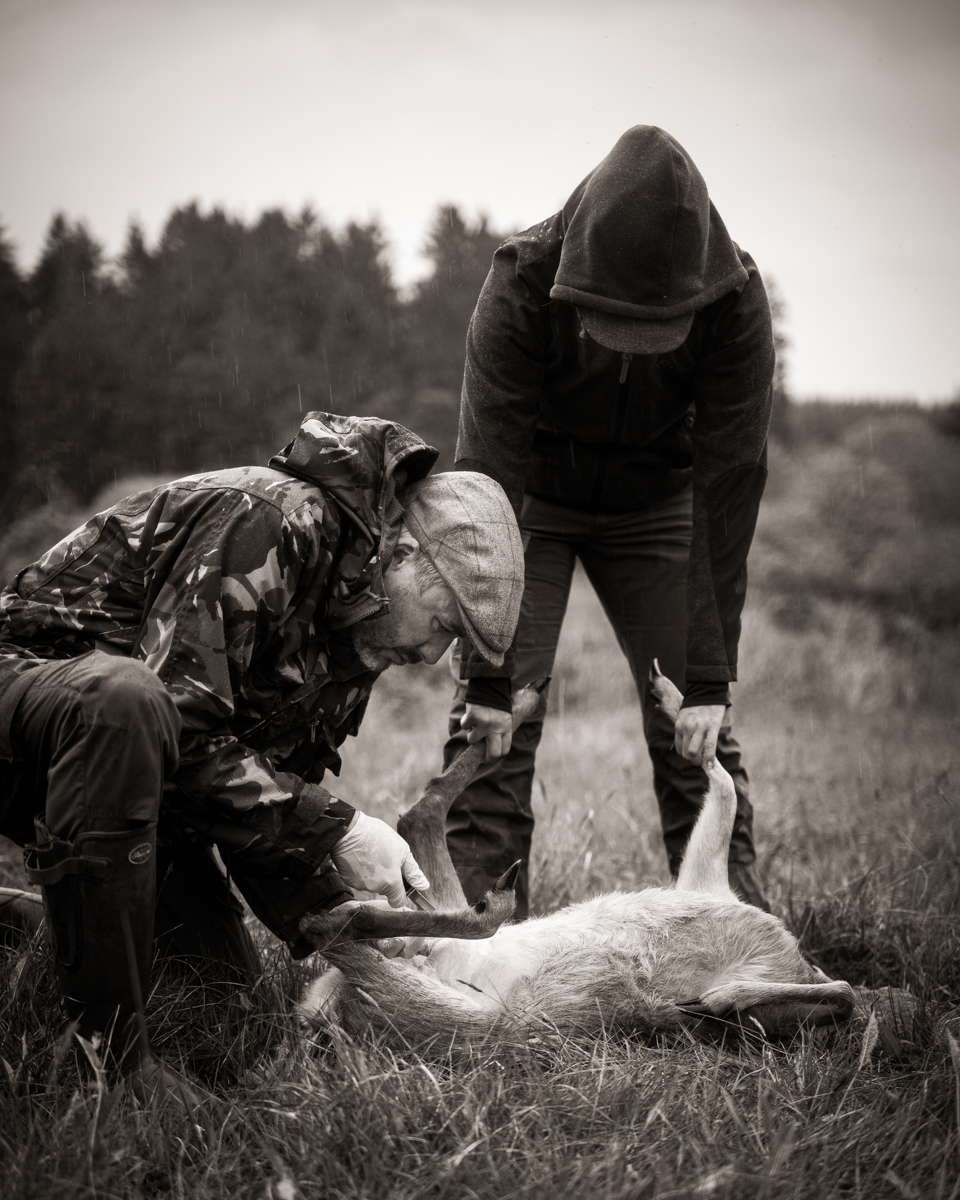 Administering the 'gralloch'. Whilst certainly no expert in this department the removal of the internal contents of the deer from the windpipe to the anus is an important priority once the deer is dead and has been bled. Once back at the 'larder' the deer can be processed further, in this instance for our own consumption.
Administering the 'gralloch'. Whilst certainly no expert in this department the removal of the internal contents of the deer from the windpipe to the anus is an important priority once the deer is dead and has been bled. Once back at the 'larder' the deer can be processed further, in this instance for our own consumption.
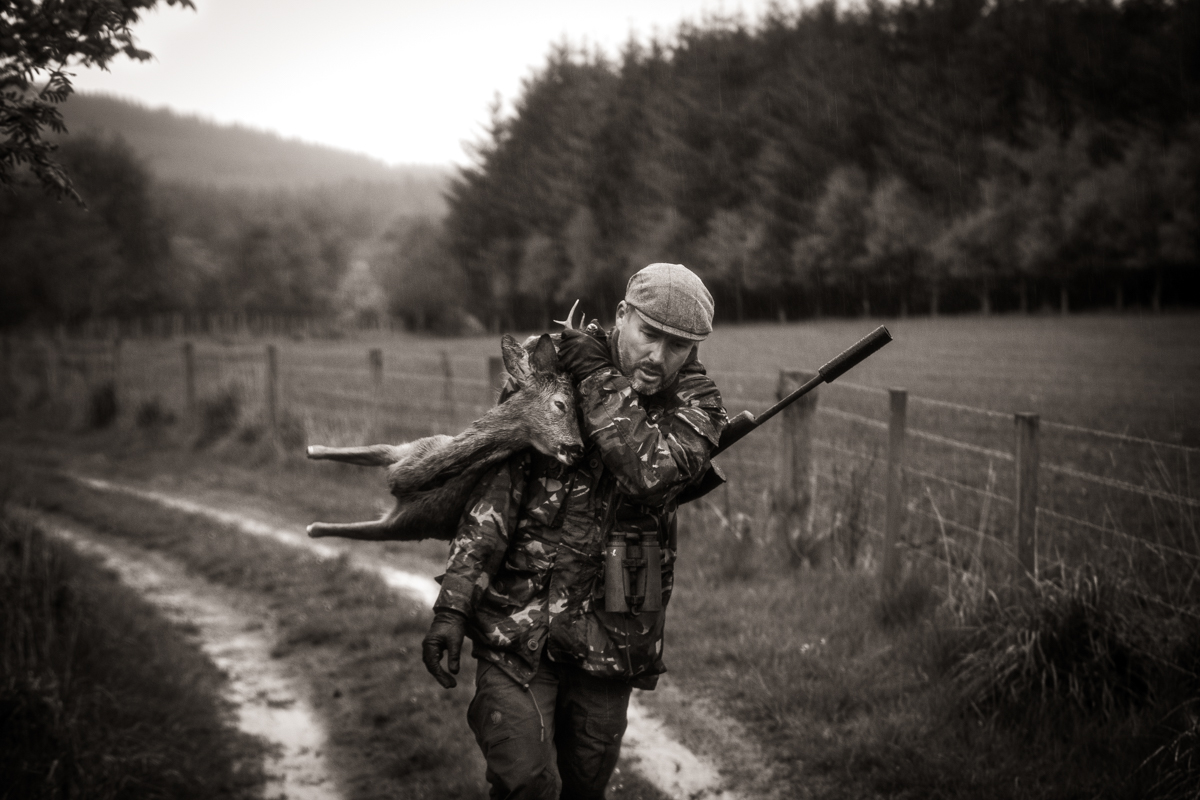 The carry home with a dead beast is a gratifying end to a stalk. It is a good time to reflect on the stalk, how it might have been done differently, how the shot was made, and how lucky we are to be able to pursue such wonderful quarry. Roebuck stalking remains one of my favourite hunting pastimes and I respect him as 'the Prince of Deer'.
The carry home with a dead beast is a gratifying end to a stalk. It is a good time to reflect on the stalk, how it might have been done differently, how the shot was made, and how lucky we are to be able to pursue such wonderful quarry. Roebuck stalking remains one of my favourite hunting pastimes and I respect him as 'the Prince of Deer'.
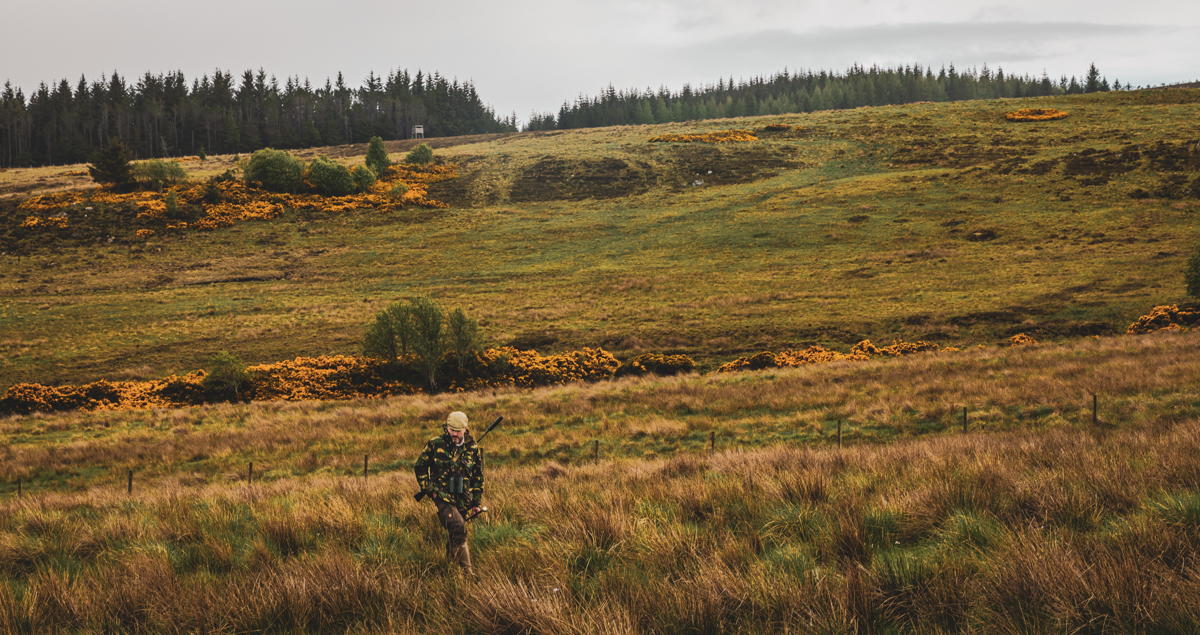 Pushing out onto the estate looking for any sign of deer. The lower part of the estate is tussocky grass interspersed with colourful gorse bushes. Its as you begin to push up onto the open hill that you get into the wet, peaty ground found at higher altitude.
Pushing out onto the estate looking for any sign of deer. The lower part of the estate is tussocky grass interspersed with colourful gorse bushes. Its as you begin to push up onto the open hill that you get into the wet, peaty ground found at higher altitude.
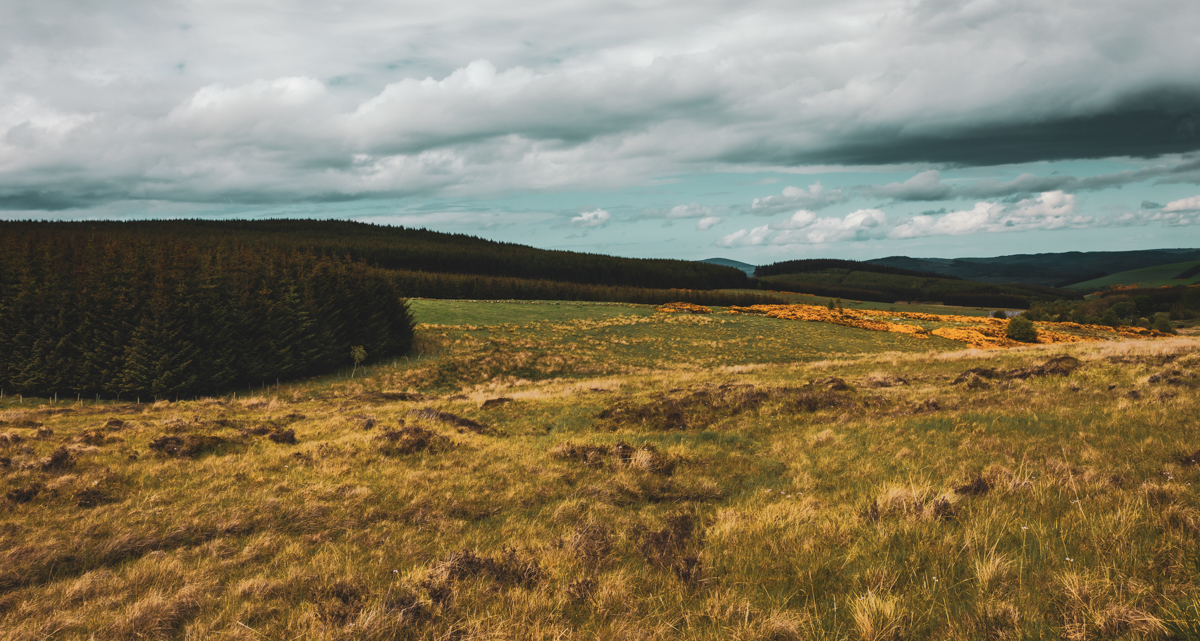 Looking back towards thousands of acres of forestry. You must always be prepared to change your plans if you see a deer emerge, even if it means stalking back in the opposite direction from where you started. The physicality of hill stalking is one of the great rewards of doing it.
Looking back towards thousands of acres of forestry. You must always be prepared to change your plans if you see a deer emerge, even if it means stalking back in the opposite direction from where you started. The physicality of hill stalking is one of the great rewards of doing it.
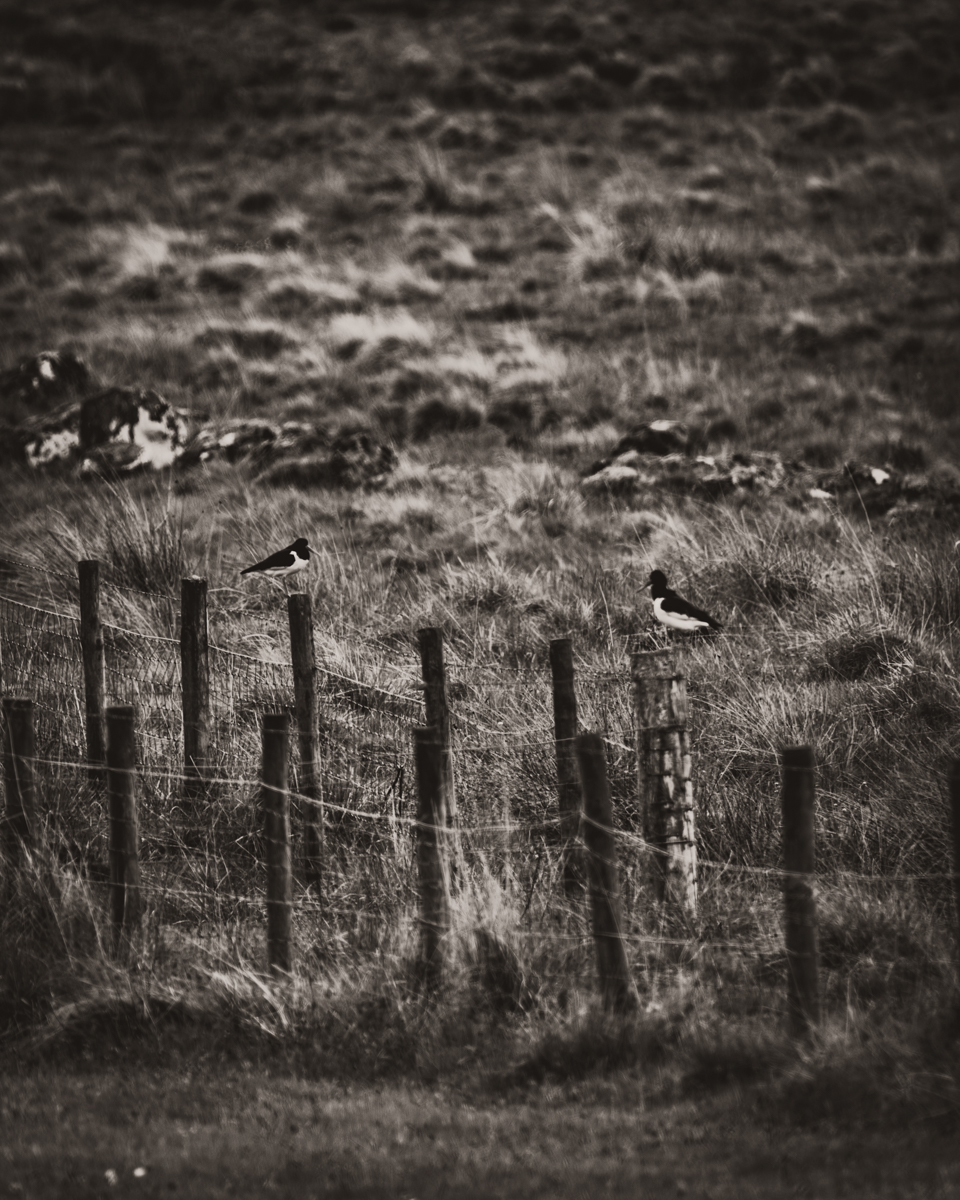 Oystercatchers (haematopus ostralegus) are one of the sights other than deer found out towards the moorland. For the first time we heard and observed the 'drumming' of a male common snipe (gallinago gallinago) which kept us engaged for 20 minutes. This drumming is part of the courtship display and whilst we had seen paintings and read about it in old sporting books, this was our first time actually witnessing the event.
Oystercatchers (haematopus ostralegus) are one of the sights other than deer found out towards the moorland. For the first time we heard and observed the 'drumming' of a male common snipe (gallinago gallinago) which kept us engaged for 20 minutes. This drumming is part of the courtship display and whilst we had seen paintings and read about it in old sporting books, this was our first time actually witnessing the event.
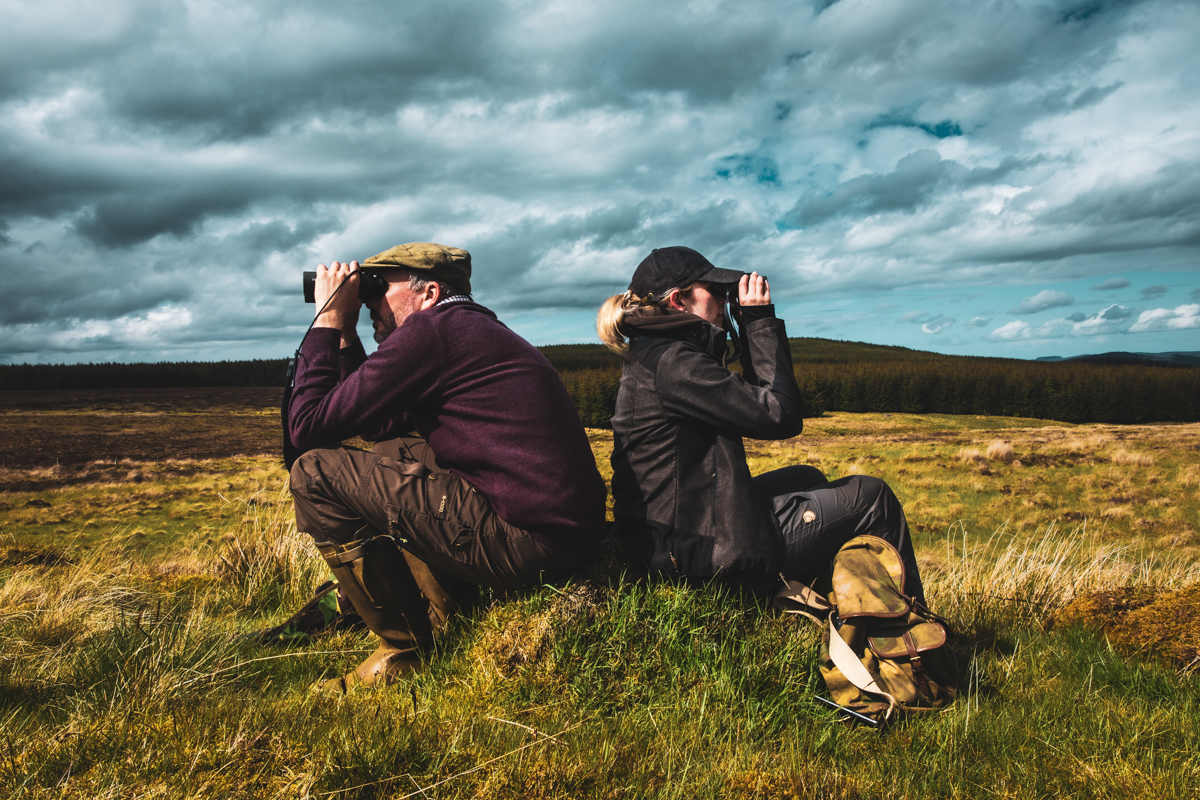 On reaching a suitable vantage point it is always good to take a rest and begin glassing 360 degrees. Roe deer are small and can be tucked away in a gully or behind a tump, easily out of sight. It pays to be patient and keep observing. With luck a deer will move, perhaps lift its head to stretch. You will need to mark the spot very carefully as the moment you move the ground begins to look different and it is easy to lose your bearing on where the deer was.
On reaching a suitable vantage point it is always good to take a rest and begin glassing 360 degrees. Roe deer are small and can be tucked away in a gully or behind a tump, easily out of sight. It pays to be patient and keep observing. With luck a deer will move, perhaps lift its head to stretch. You will need to mark the spot very carefully as the moment you move the ground begins to look different and it is easy to lose your bearing on where the deer was.
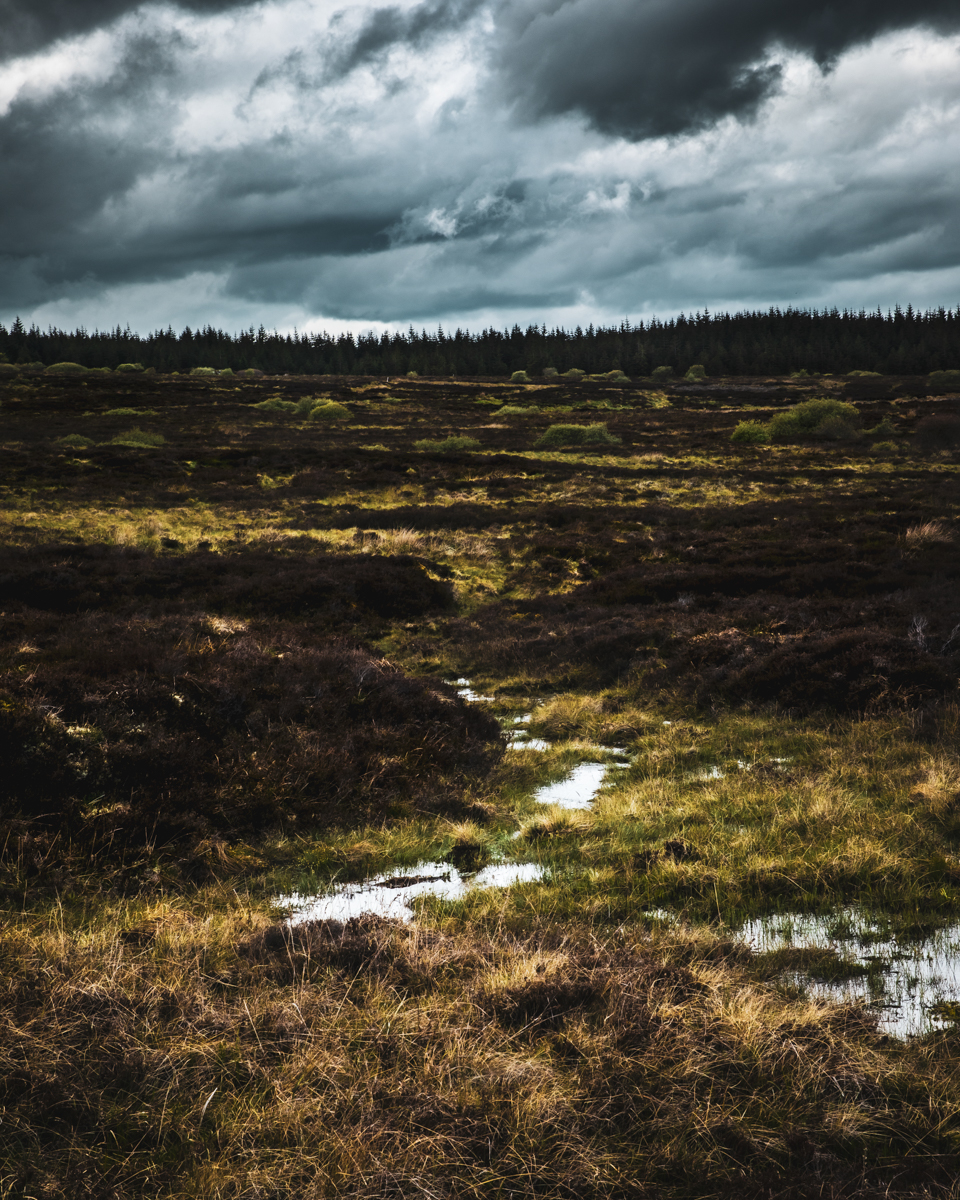 Perfect ground for both red and roe deer to hide in. You would be amazed at how easy it is for them to disappear in this type of terrain. The stalker needs to be ever vigilant as a deer can be watching you from some favoured spot, or unexpectedly emerge from a gully or bush.
Perfect ground for both red and roe deer to hide in. You would be amazed at how easy it is for them to disappear in this type of terrain. The stalker needs to be ever vigilant as a deer can be watching you from some favoured spot, or unexpectedly emerge from a gully or bush.
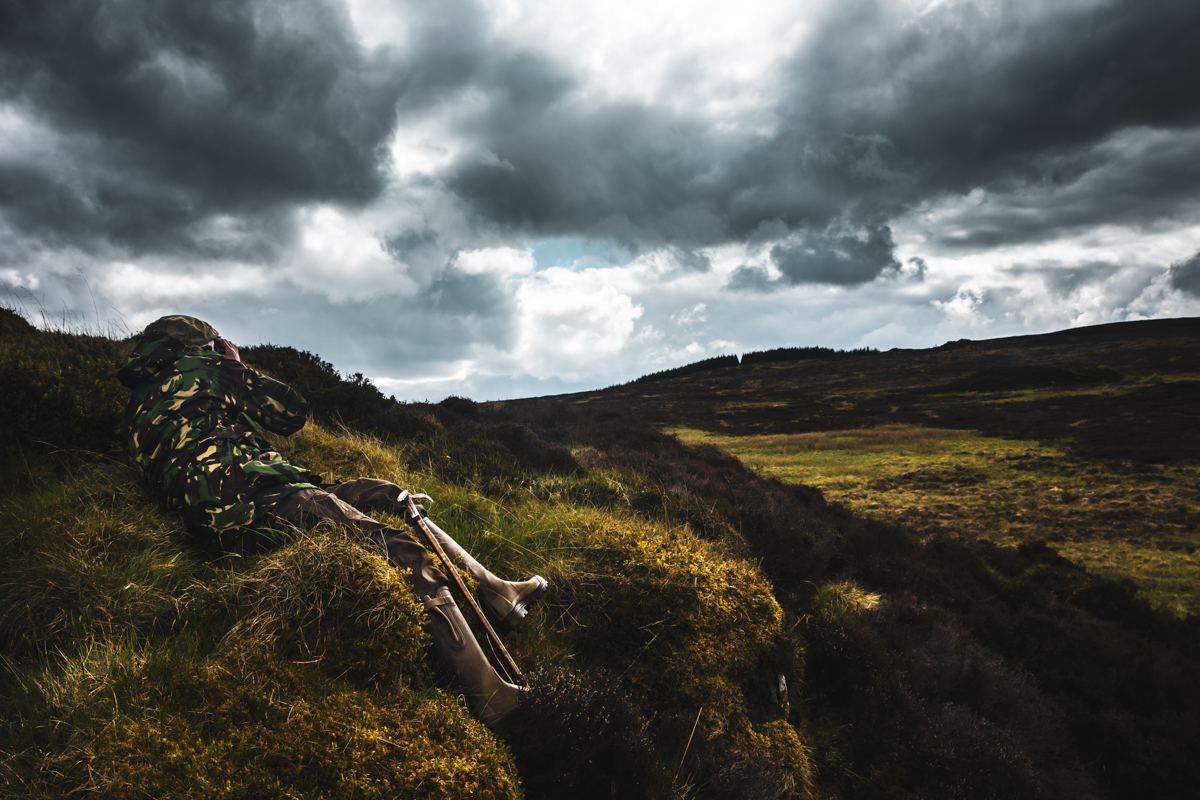 Glassing from this small hillock we were certain there would be a roebuck somewhere. Unbeknown to us we had been spotted as we got to this position and even though we spent thirty minutes glassing, could not see the buck that calmly sat watching us. It was only as we began to move off that the buck jumped up and made off with a loud 'bark'. This bark was repeated as he continued far away up the hill and over the horizon to the neighbouring forestry block. Such is hill stalking and another valuable lesson learned!
Glassing from this small hillock we were certain there would be a roebuck somewhere. Unbeknown to us we had been spotted as we got to this position and even though we spent thirty minutes glassing, could not see the buck that calmly sat watching us. It was only as we began to move off that the buck jumped up and made off with a loud 'bark'. This bark was repeated as he continued far away up the hill and over the horizon to the neighbouring forestry block. Such is hill stalking and another valuable lesson learned!
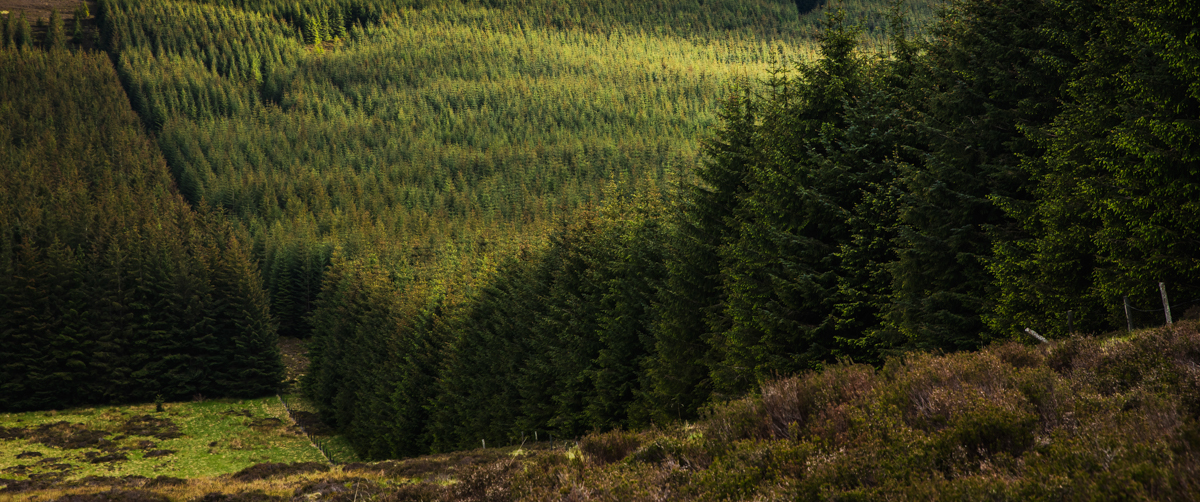 The huge forestry block bordering the far end of the estate. Although heavily controlled by professional deer managers, these forests do provide habitat in which the deer can transit from one area to another. Thankfully there always seems a surplus to keep the estate stocked with both red and roe deer.
The huge forestry block bordering the far end of the estate. Although heavily controlled by professional deer managers, these forests do provide habitat in which the deer can transit from one area to another. Thankfully there always seems a surplus to keep the estate stocked with both red and roe deer.
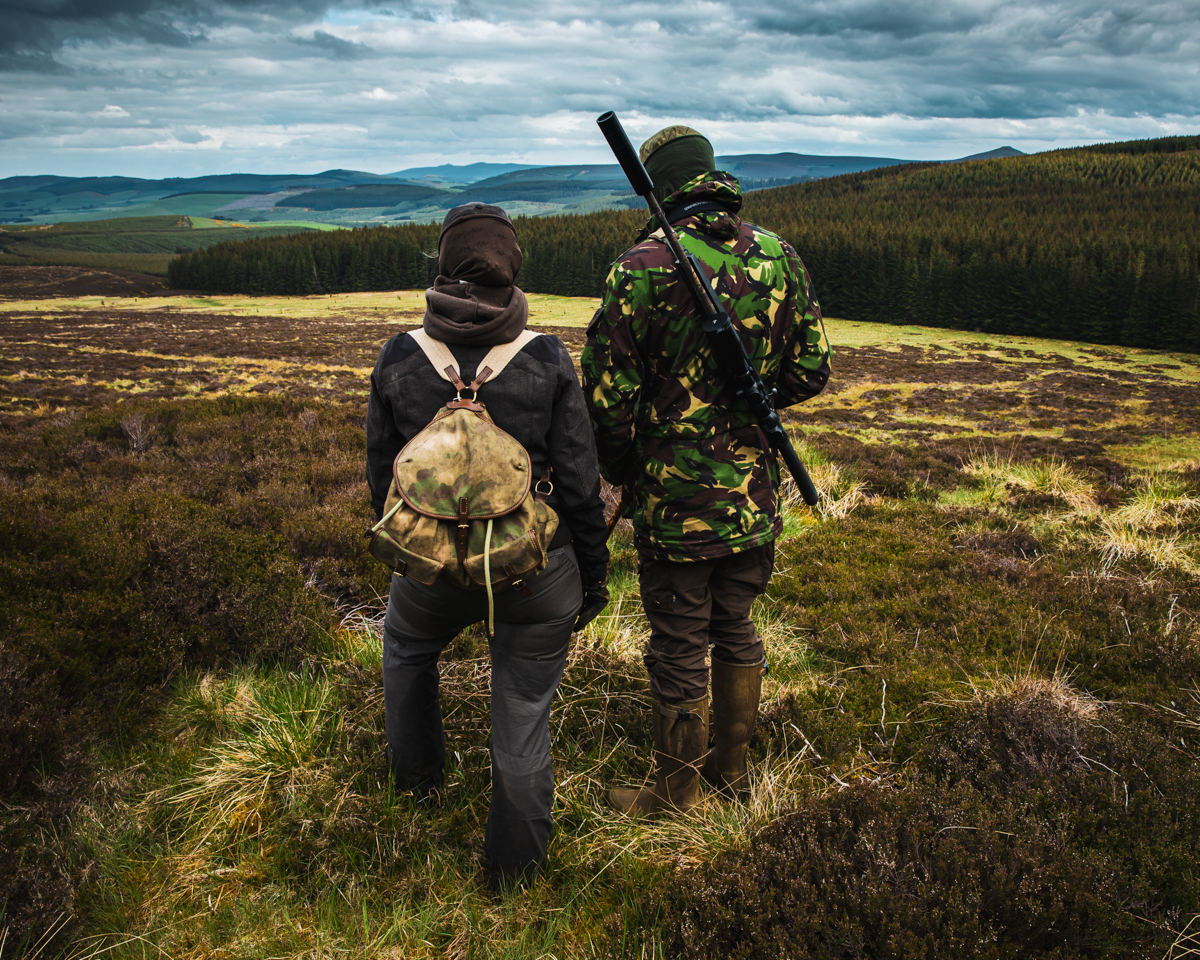 The far end of the estate looking back down into the woodland edge. Various deer were spotted but all were roe does. This was the furthest point out on the estate and made for a very rewarding hike out. Having never stalked the ground before and without the aid of any professional, it was great to see the extremities of the estate and work out for yourself how you might make future stalks. Finding potential 'hot spots' for deer is all part of the adventure, should they end up in a successful stalk, then all the more rewarding.
The far end of the estate looking back down into the woodland edge. Various deer were spotted but all were roe does. This was the furthest point out on the estate and made for a very rewarding hike out. Having never stalked the ground before and without the aid of any professional, it was great to see the extremities of the estate and work out for yourself how you might make future stalks. Finding potential 'hot spots' for deer is all part of the adventure, should they end up in a successful stalk, then all the more rewarding.
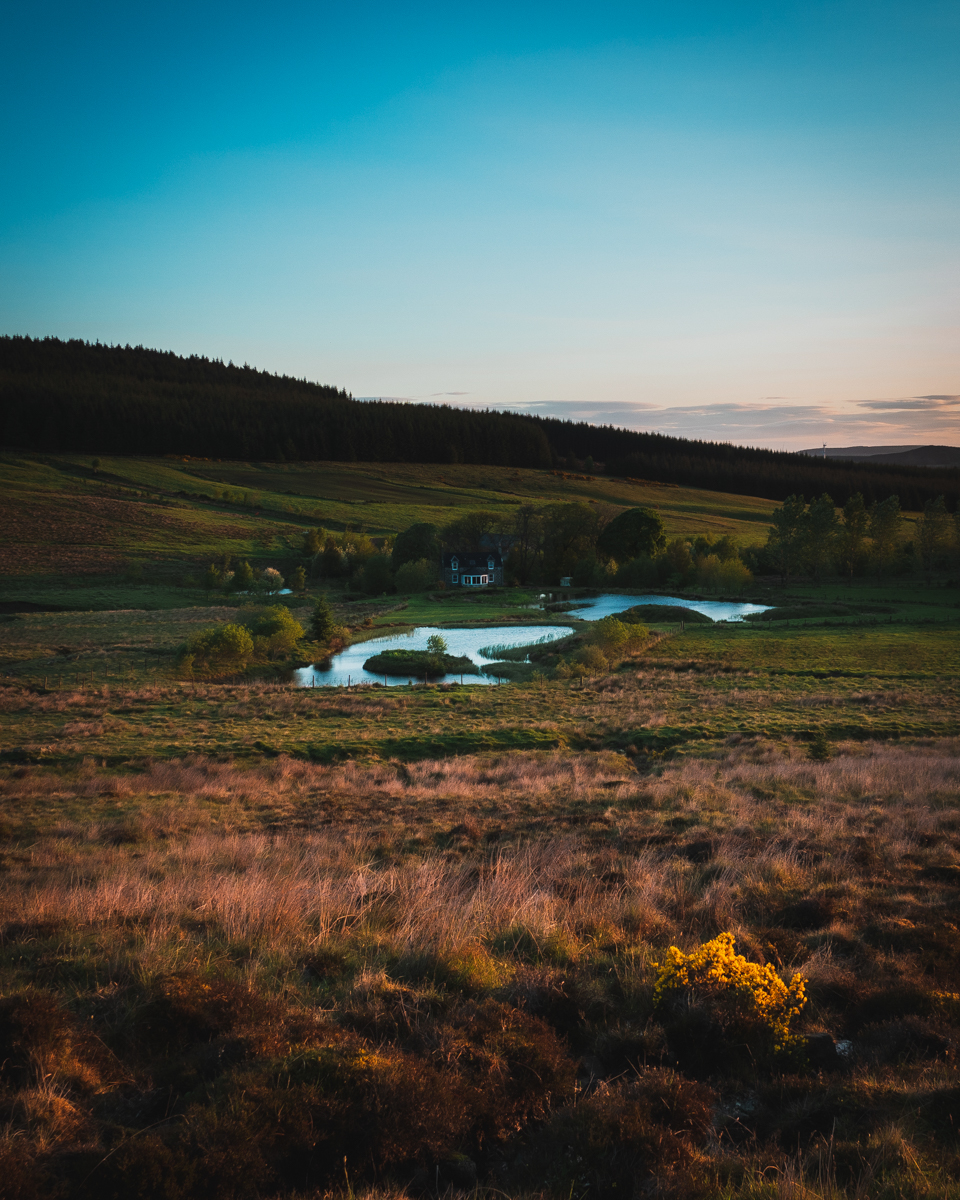 On the last morning the weather was truly stunning. The low cloud broke away to reveal a spectacular sunrise. Leaving before first light allowed the opportunity to gain some elevation and spy some of the low ground behind the lodge. A roe doe and a couple of red hinds were spotted, but no roe bucks.
On the last morning the weather was truly stunning. The low cloud broke away to reveal a spectacular sunrise. Leaving before first light allowed the opportunity to gain some elevation and spy some of the low ground behind the lodge. A roe doe and a couple of red hinds were spotted, but no roe bucks.
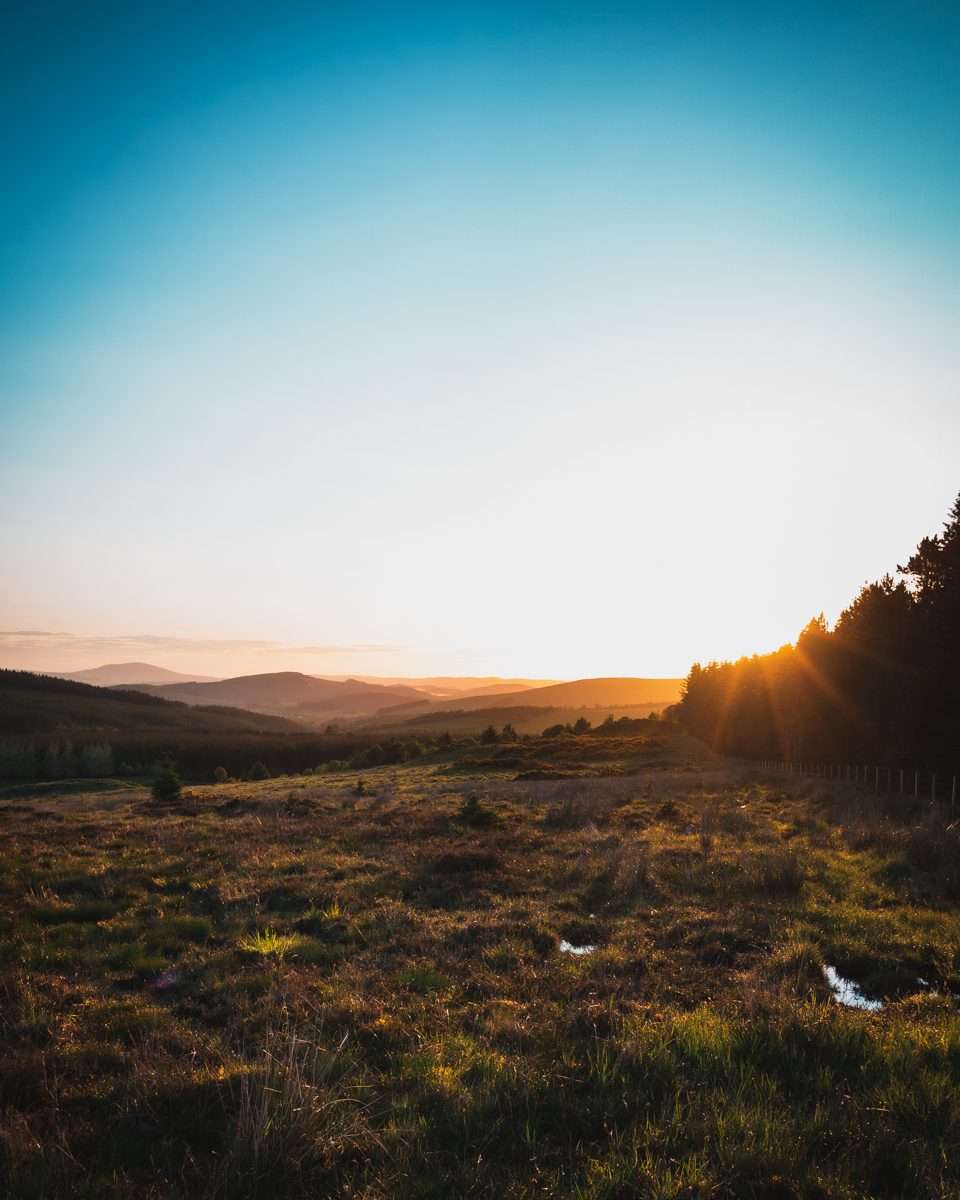 With the sun rising slowly behind it was time to push on up the moor into a new plantation in the hope of finding a buck. Typically and rather frustratingly, even with such great weather conditions and slow meticulous stalking, nothing other than a young roe doe and red hind were spotted. The final morning was clearly one for the female of the species!
With the sun rising slowly behind it was time to push on up the moor into a new plantation in the hope of finding a buck. Typically and rather frustratingly, even with such great weather conditions and slow meticulous stalking, nothing other than a young roe doe and red hind were spotted. The final morning was clearly one for the female of the species!
The Explora Blog is the world’s premier online journal for field sports enthusiasts, outdoor adventurers, conservationists and admirers of bespoke gunmaking, fine leather goods and timeless safari clothes. Each month Westley Richards publishes up to 8 blog posts on a range of topics with an avid readership totalling 500,000+ page views per year.
Blog post topics include: Finished custom rifles and bespoke guns leaving the Westley Richards factory; examples of heritage firearms with unique designs and celebrated owners like James Sutherland and Frederick Courtenay Selous; the latest from the company pre-owned guns and rifles collection; interviews with the makers from the gun and leather factory; new season safari wear and country clothing; recent additions to our luxury travel bags and sporting leather goodsrange; time well spent out in the field; latest news in the sporting world; and key international conservation stories.












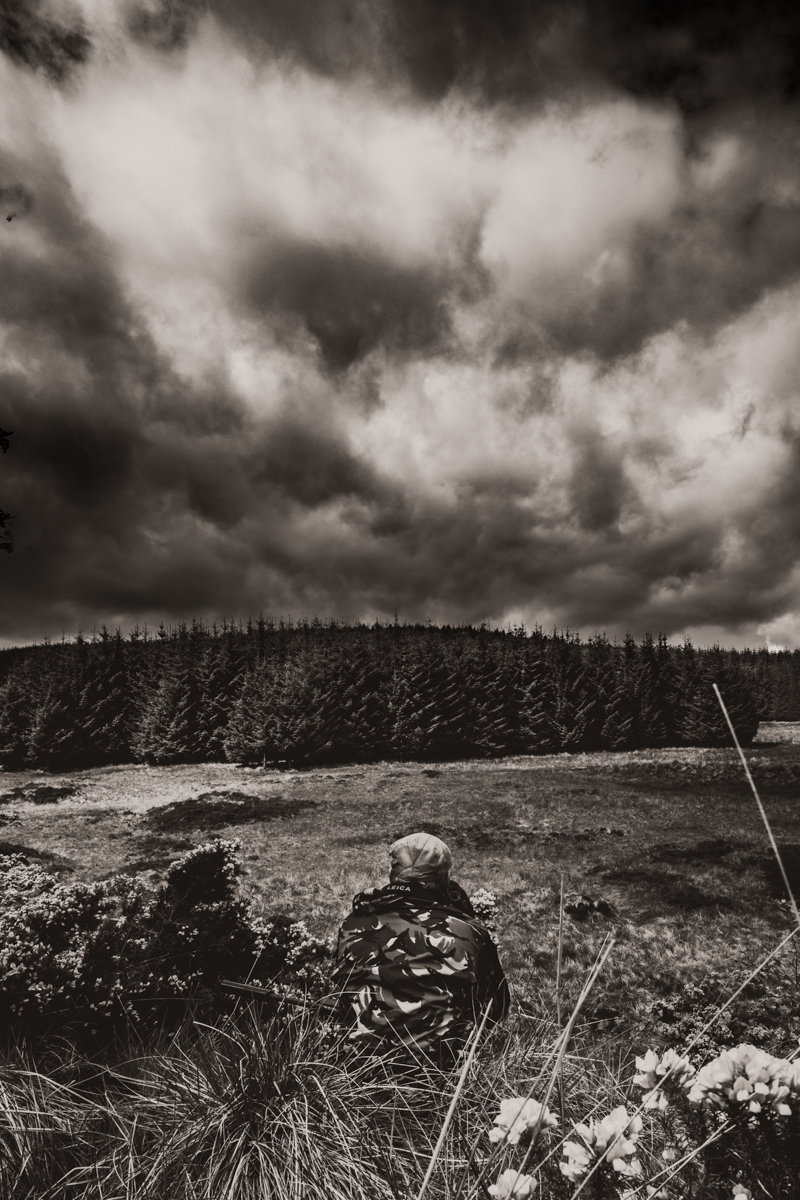
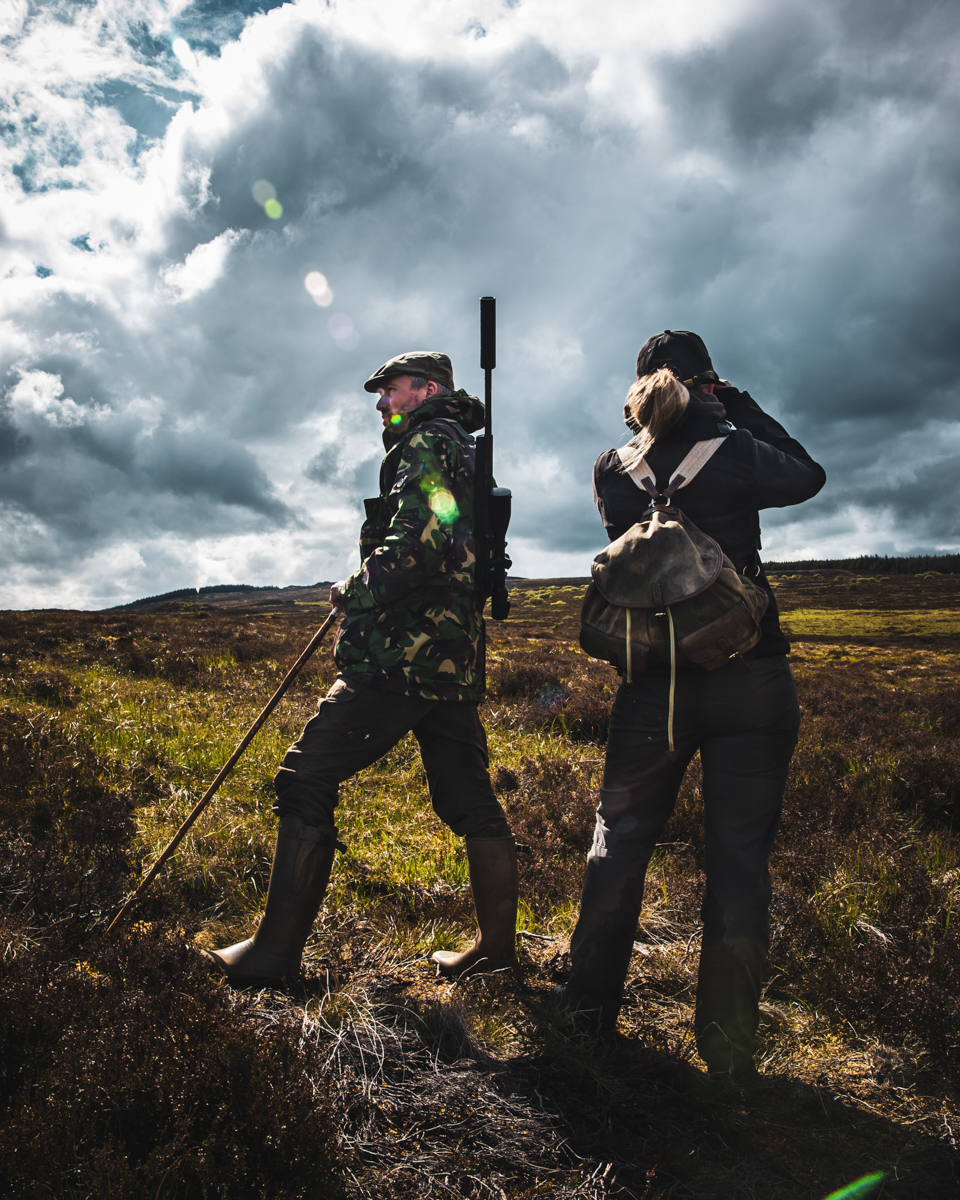
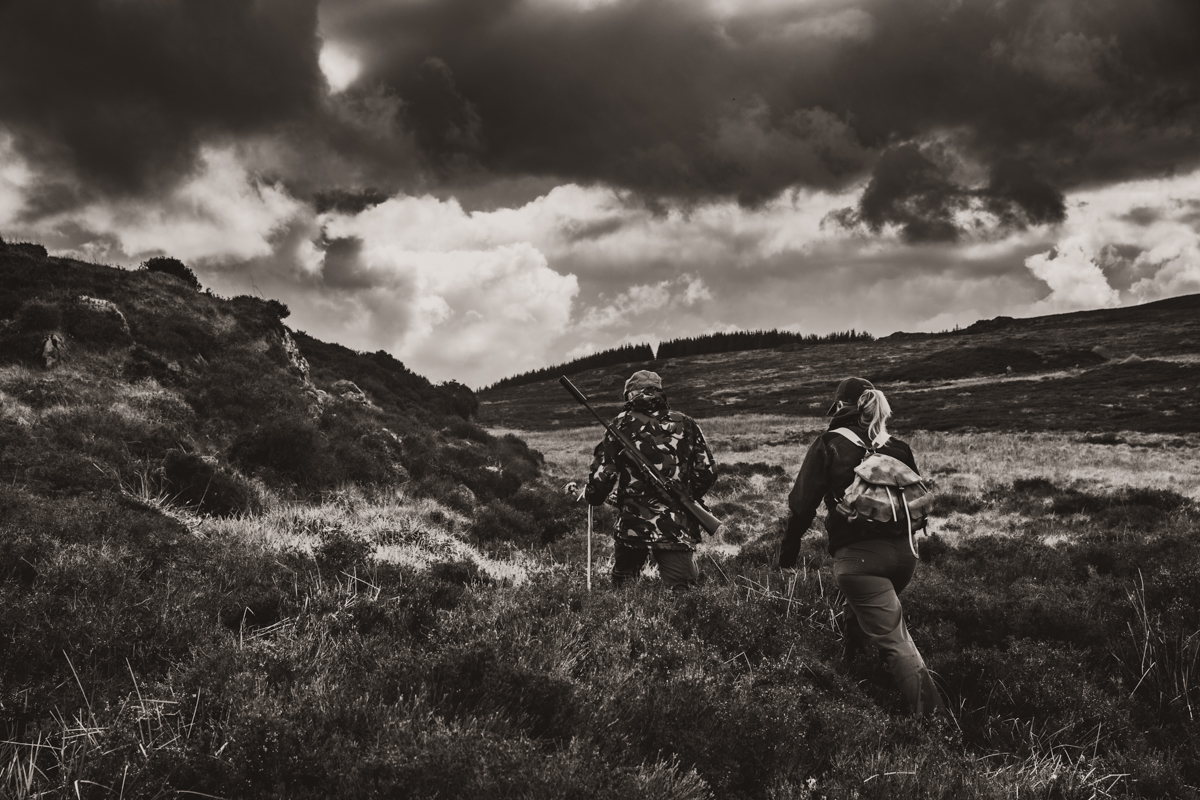
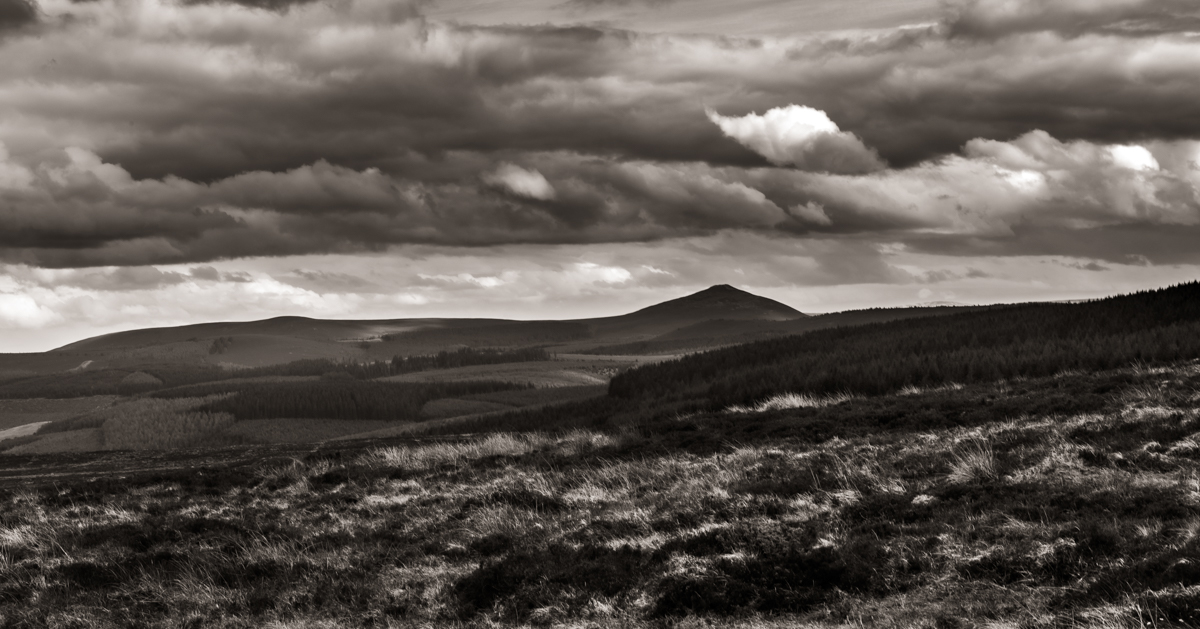
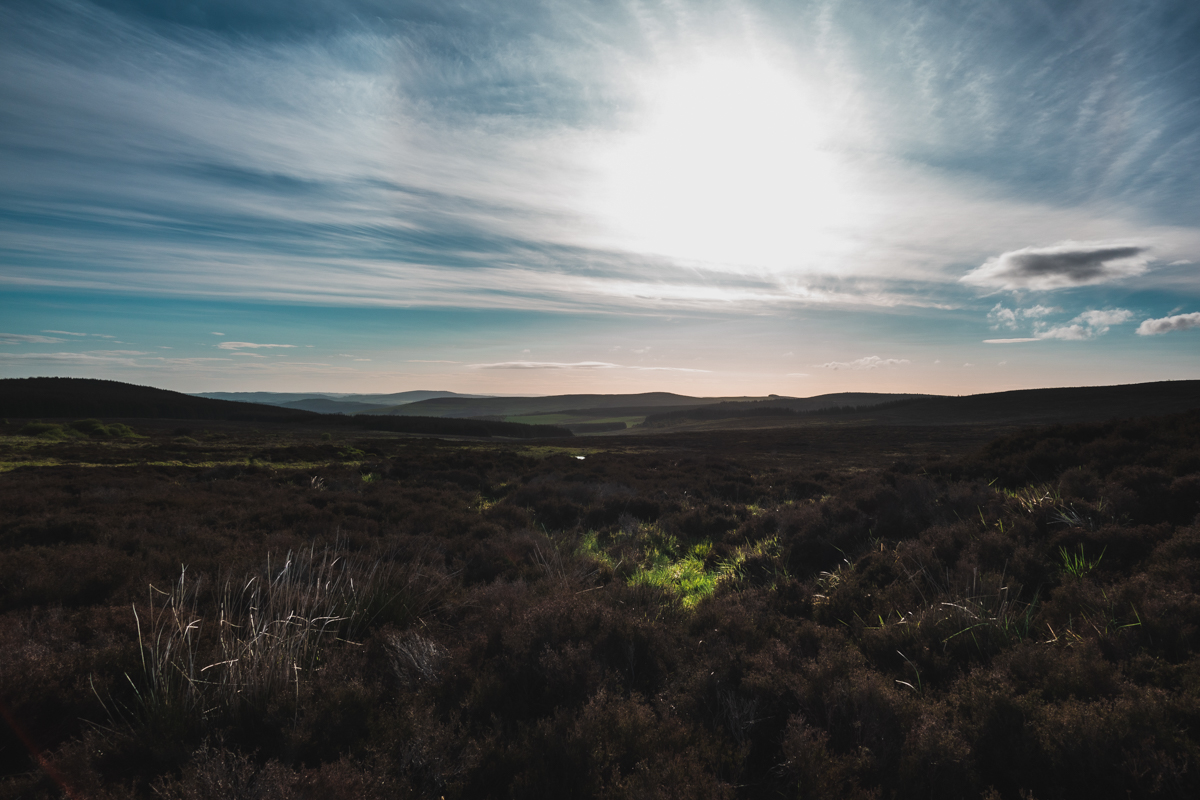






The Old Git. on June 7, 2020 at 9:43 am
Trigger
What a great write up thoroughly enjoyed that.
Such an idyllic location, no TV, mobile phone or internet connections......heaven !
No hustle and bustle of the concrete jungle, harvesting nature’s bounty to put food on the table, l suppose I’m your stereotypical antisocial old git who requires peace and tranquillity in his dotage. Jealous of the subject location ?....... “mega jealous” !!
Regards
The Old Git.
Willoughby-McCabe on July 28, 2020 at 12:51 pm
Great story and images Trigger! Refreshing to read in 103 degree Dallas- Thanks!
Anders Holm on November 17, 2020 at 11:22 pm
Lovely setup!
So good to hear from you again!
All the best- we will be back!!